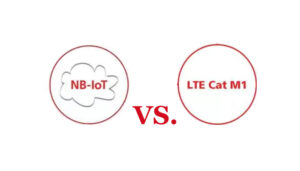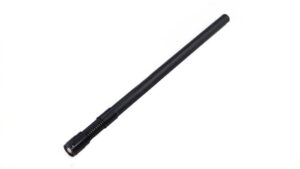Why is the IoT considered so suitable for the New 5G, called 5G industrial IoT, especially for 5G applications for the industry? Which 5G industrial IoT applications are likely to be the most important? What challenges of 5G industrial IoT remain to be overcome?
Applying 5G to the Industrial IoT
When considering which market segments will generate significant 5G revenues first, the Industrial Internet of Things (IIoT) comes in a close second, just behind consumer devices.
The definition of industrial IoT, let’s take a closer look at what it means in practice. Broadly speaking, the IoT can refer to anything connected to the Internet, not just phones, tablets, or computers. For the Industrial IoT, we’ll narrow it down to devices in factories, process industries, or other industrial environments.
This is still a fairly broad definition of the Industrial IoT. To understand the use of 5G NR, we need to be more specific. Within the industrial IoT segment, we can see that important use cases for 5G will include condition monitoring, robotics, augmented reality/virtual reality, and process control.
As it relates to the timing of the 5G rollout, condition monitoring, and robotics are likely to be the gateways that open the way for increased future spending. Condition monitoring and its use in predictive maintenance is an example of an application that easily quantifies the economic benefits of IoT, which allows manufacturers to justify IoT more directly.
Robotics can spur investment by requiring a dedicated 5G wireless infrastructure, as existing wired connections do not enable the mobility required for applications such as connected and autonomous factory robots.
5G Industrial IoT
We have looked at a number of applications, but we have yet to address why 5G industrial IoT applications might be so useful.
The discussion of 5G has typically focused on the increase in bandwidth compared to 4G and 3G, offering faster data rates of up to 10Gbps and the ability to support more devices from a single base station. In industrial settings, this could be useful for applications such as remote diagnosis of equipment problems using augmented reality technicians.
By implementing artificial intelligence locally near IoT devices or IoT devices themselves, monitoring sensor data, and sending data over the network only when problems are identified or action is needed, the bandwidth required can be reduced.
Low latency is also important in many industrial use cases. Ideally, the time between sending and receiving a 5G signal may be as low as 1 millisecond, compared to about 200 milliseconds for 4G. This is critical for process control, as the 5G new radio is used to control devices in real-time, as well as for mobile factory robots that send and receive data across the network.
For example, a pick-and-place robot might use cameras and other sensors to scan a shelf and then send the raw data to the network, where algorithms process and forward instructions to the robot, all in the blink of an eye.
Another benefit of 5G is energy efficiency. The 5G standard includes several features to reduce power consumption, such as extensive use of sleep mode when there is little or no data transmission. In terms of watts per bit of data, 5G is 90 percent more efficient than 4G networks. For battery-powered IoT devices, this can have a significant impact on how long a device can run between charges.
While 5G networks provided by large carriers will be the best option in some cases, a better option for many industrial applications is a dedicated network, where separate 5G networks are created specifically for specific locations and implementations of devices and data transmissions. This means that the network can be customized to a company’s specific needs and ensure security and service levels.
5G industrial IoT frequencies
Another technical area to consider is the frequency bands used for 5G industrial IoT. Going back to high school physics, you may recall that higher frequencies can carry more data. Thus, 5G industrial IoT can use millimeter wave (mmWave) bands above 6 GHz to achieve its high bandwidth.
However, these high frequencies also mean that signals are more likely to be absorbed by objects, walls, or other obstacles. As a result, more base stations or small base stations are needed to fill the gaps in today’s network coverage.
Millimeter-wave signals also require techniques such as beamforming and steering to cope with signal attenuation due to high frequencies, which adds cost and complexity. To support these technologies, 5G industrial IoT networks will require more complex antennas at both the base station and the connected devices compared to 4G. These antennas must be redesigned and optimized to provide the right functionality and performance.
In addition to the network itself, IoT devices will obviously need to be optimized for 5G industrial IoT connectivity. We just mentioned antennas, but as data rates increase, other aspects will need to be redesigned to keep up, from connectors to microcontrollers.
The shift to 5G industrial IoT offers alternative bands that operate in the spectrum below 6 GHz, down to 450 MHz. this longer-range band can make deployment easier and still offer many 5G benefits at the expense of the ultra-fast speeds that millimeter-wave can achieve. In practice, these frequencies below 6 GHz are likely well suited for use as transition technologies, allowing for faster rollouts by reducing the required investment.
In our survey, 89% of respondents agreed that 5G will be larger than 4G, and 88% expect 5G to generate new revenue streams. As noted above, 5G industrial IoT is ideal for the new 5G in many applications.
This is happening soon, with 35 percent of survey participants saying they have already achieved their business goals for 5G industrial IoT, or will do so within a year. In fact, 92 percent of respondents expect the timeframe to be within five years. Similarly, 91 percent of respondents said they expect 5G industrial IoT to deliver significant new business revenue within the next five years.
To achieve this timeline, 5G industrial IoT operators and OEMs must quickly develop and implement complex systems. Using new RF standards brings new challenges, and for industrial applications, everything must work in electrically noisy and physically harsh environments.
As a manufacturer of 5G antennas, we have seen a large number of relevant IIoT use cases. Each use case may benefit from 5G industrial IoT in a different way. Understanding the application, and recognizing that it will be different each time, is critical to ensuring the successful specification, selection, and implementation of a solution.
The 5G industrial IoT market offers tremendous opportunities for 5G, but taking full advantage of it requires careful evaluation and planning that directly addresses specific use cases as well as technical and business objectives.
Besides the Why is 5G Industrial IoT article, You may also be interested in the below articles.
PCB Antenna VS. External Antenna
Ceramic Antenna VS. PCB Antenna, A Comparison Guide
Wifi vs. 5G, is 5G better than Wifi?
Mobile Networks’ Evolution From 1G To 5G




